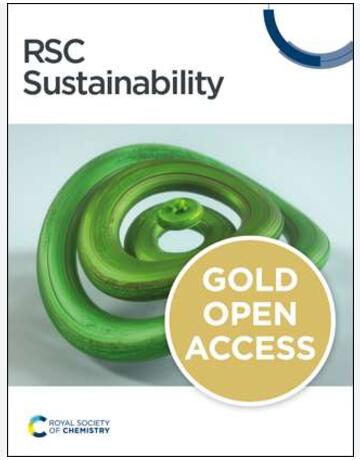利用基于交通需求的指标识别可退化路网中的关键环节
IF 3.3
3区 环境科学与生态学
Q2 ENVIRONMENTAL SCIENCES
引用次数: 0
摘要
确定关键连接的主要交通指标包括旅行时间、运输效率和交通需求。这些指标很少应用于整个网络中出现连接能力下降的情况。此外,常用的基于交通需求的指标,即 "未满足需求",只有在网络中存在不相连的起点-终点(OD)对时才能发挥作用。在这种情况下,本研究采用了可降解道路网络的概念来表示这种情况,并引入了一种新的基于全网交通需求的指标,定义为晚到需求(LAD),以识别关键环节。具体来说,我们建立了一个基于晚到率(LAR)的用户均衡(UE)模型,以捕捉出行行为并估算可退化道路网络中的晚到需求。然后,在基于 LAR 的用户均衡模型框架内,引入 LAD 和其他四个指标来识别关键环节。最后,采用 Nguyen-Dupuis 和 Sioux Falls 网络进行了数值实验。实验结果表明,在不同程度的交通需求和劣化条件下,LAD 是一种灵活有效的基于全网交通需求的指标。这一新方法提供的见解有助于管理者从交通需求的角度评估可退化道路网络中的链接临界度。本文章由计算机程序翻译,如有差异,请以英文原文为准。
Identifying Critical Links in Degradable Road Networks Using a Traffic Demand-Based Indicator
The primary traffic-based indicators for identifying critical links account for travel time, transportation efficiency, and traffic demand. These indicators are seldom applied to scenarios in which link capacity degradation occurs across the entire network. In addition, the commonly used traffic demand-based indicator, known as unsatisfied demand, can only work when there are disconnected origin–destination (OD) pairs in the network. In this context, this study incorporates the concept of a degradable road network to represent such scenarios and introduces a new network-wide traffic demand-based indicator, defined as late arrival demand (LAD), to identify critical links. Specifically, we built a late arrival rate (LAR)-based user equilibrium (UE) model to capture travel behavior and estimate the LAD in degradable road networks. Then, LAD and four other indicators were introduced to identify critical links in the framework of the LAR-based UE model. Finally, the Nguyen–Dupuis and Sioux Falls networks were employed for numerical experiments. The results, under various levels of traffic demand and degradation, demonstrate that LAD is a flexible and effective network-wide traffic demand-based indicator. This new approach provides insights that can help managers assess link criticality in degradable road networks from the perspective of traffic demand.
求助全文
通过发布文献求助,成功后即可免费获取论文全文。
去求助
来源期刊

Sustainability
ENVIRONMENTAL SCIENCES-ENVIRONMENTAL SCIENCES
CiteScore
6.80
自引率
20.50%
发文量
14120
审稿时长
17.72 days
期刊介绍:
Sustainability (ISSN 2071-1050) is an international and cross-disciplinary scholarly, open access journal of environmental, cultural, economic and social sustainability of human beings, which provides an advanced forum for studies related to sustainability and sustainable development. It publishes reviews, regular research papers, communications and short notes, and there is no restriction on the length of the papers. Our aim is to encourage scientists to publish their experimental and theoretical research relating to natural sciences, social sciences and humanities in as much detail as possible in order to promote scientific predictions and impact assessments of global change and development. Full experimental and methodical details must be provided so that the results can be reproduced.
 求助内容:
求助内容: 应助结果提醒方式:
应助结果提醒方式:


